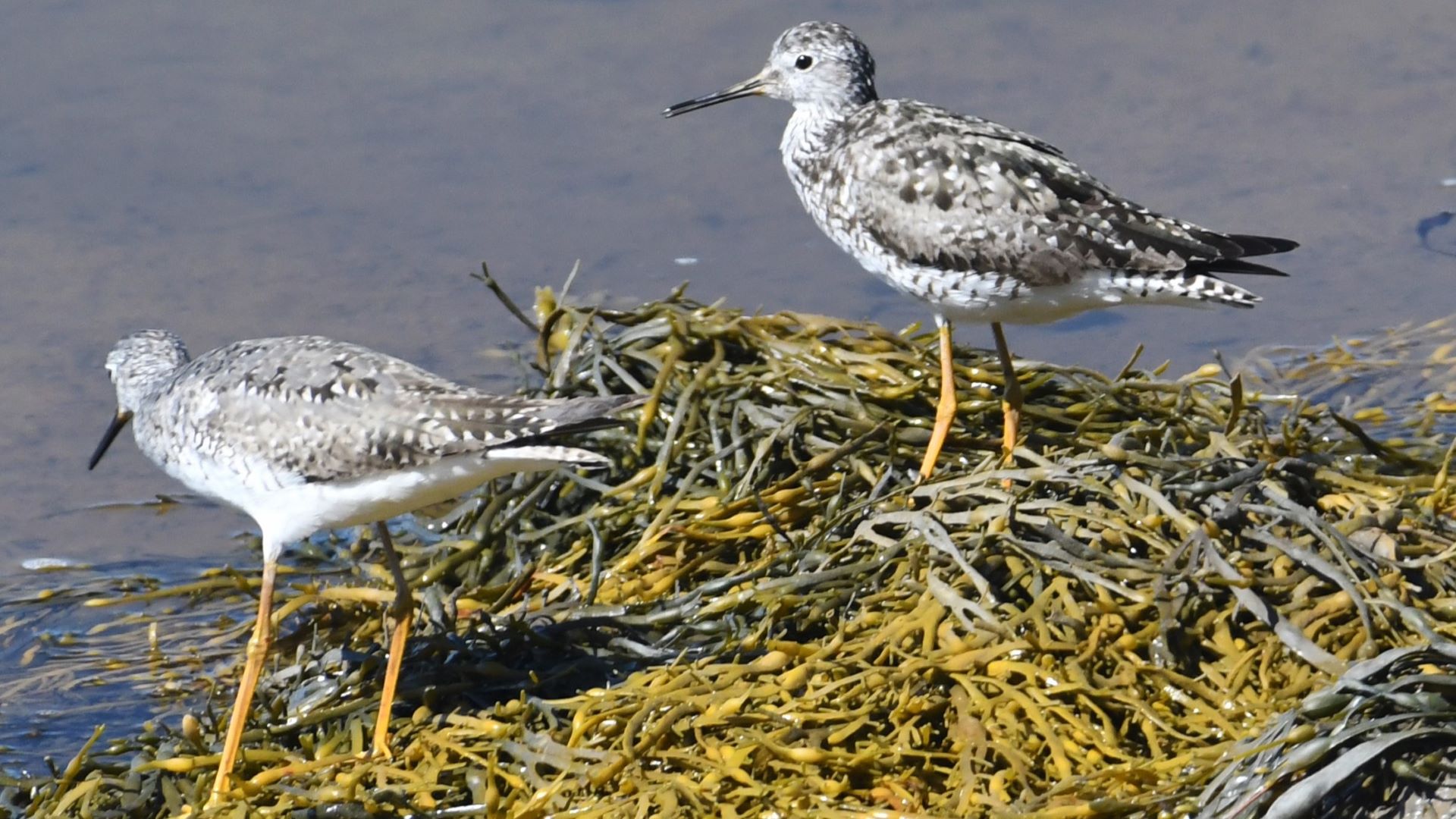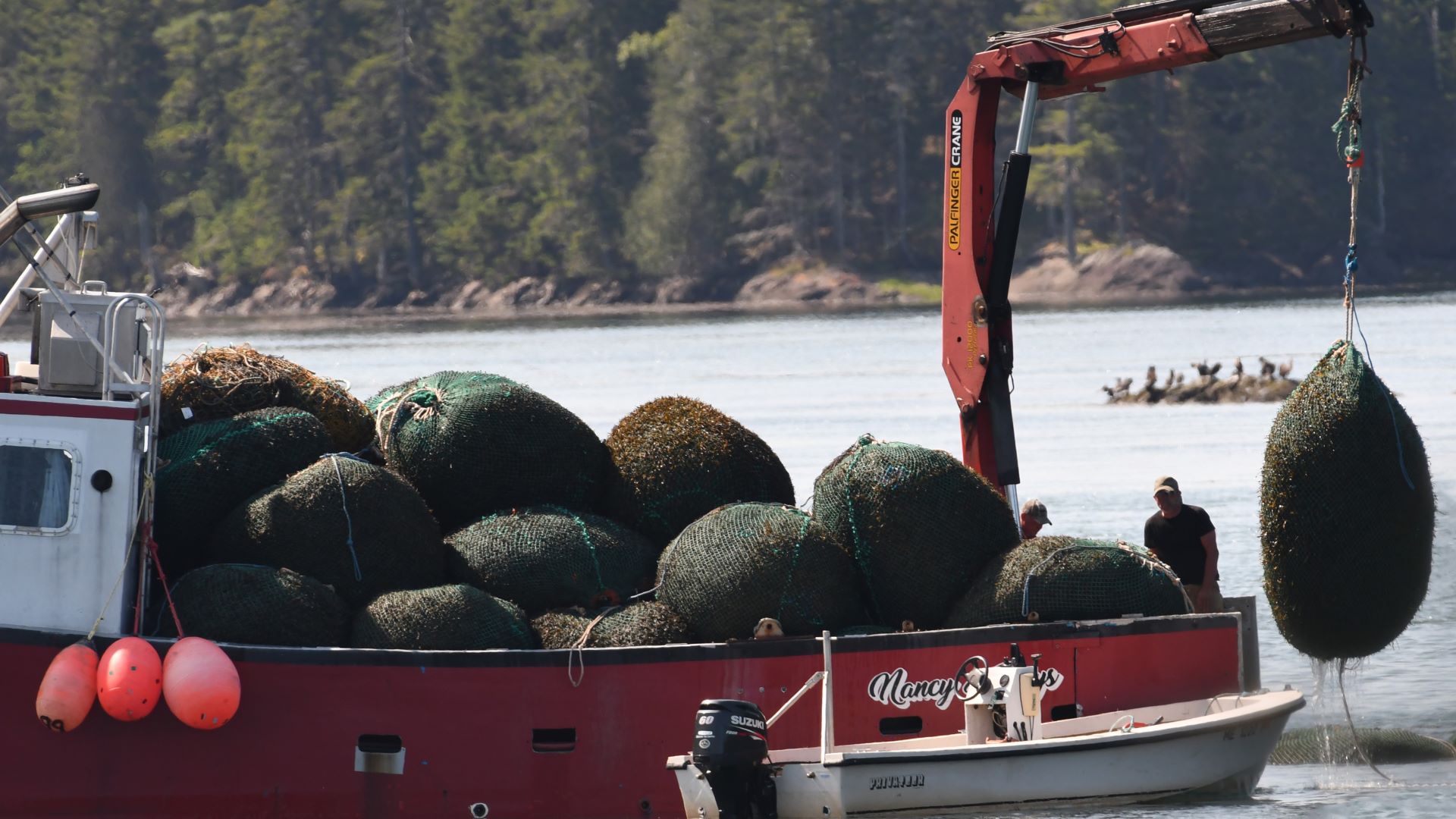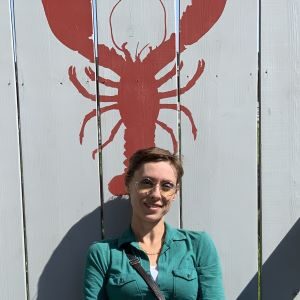The Maine Marine Patrol is bringing charges against four individuals in connection with alleged illegal rockweed harvesting in Washington County, in what a state official said are the first prosecutions for illegally extracting the hotly contested resource in recent memory.
Rockweed, a brownish algae found close to shore throughout Maine, forms a veritable underwater forest. It’s “not only a foundational species, but a keystone species, and an ecosystem engineer,” said Dr. Robin Hadlock Seeley of the Maine Rockweed Coalition. It supports biodiversity, with over 100 animals feeding on it or using it as a nursery — including lobsters, scallops, and a host of fish like pollock, cod and herring.
Rockweed is harvested for fertilizer and mulch, and also has been used as a packing material for lobsters and bait worms. In the past two decades, rockweed harvesting has taken off in Maine.
Between 2004 and 2012, landings went up five-fold to 7,312 tons, according to the Department of Marine Resources (DMR). In 2021, preliminary data shows 7,564 tons were harvested. The value of rockweed sold off the dock fluctuates, but tends to be around 5 cents per pound. Due to its secondary role supporting other industries, Maine values its rockweed harvest at $20 million.
Rockweed can be harvested throughout the year, though most is done in the summer due to the seaweed’s reproductive cycle. For residents, getting a primary license for rockweed harvesting is $58, while a supplement license is $29. Nonresidents pay $230 and $58, respectively. Each year the number of licenses issued for seaweed harvesting fluctuates slightly, with 134 issued in 2023.
While the licenses grant the ability to harvest all seaweeds, rockweed makes up 90% of the state’s seaweed harvest, according to the DMR.
The Cobscook Bay Rockweed Management Area law of 2009 makes cutting rockweed on conserved lands in Cobscook Bay illegal. Other areas along Maine’s coast have fewer restrictions.
Even with a clear path to legal harvesting, illegal rockweed harvesting is rampant, according to Seeley. She and the volunteers she works with have tracked dozens of illegal harvests in the past three years while mapping active areas of harvest and studying harvest impacts.
“Every conserved land I’ve been on in Cobscook Bay has had rockweed cut on some part of the property,” Seeley said.

Instances of rockweed theft from private landowners have occurred frequently as well, despite a 2019 ruling from the Maine Supreme Judicial Court that harvesters must have direct permission from landowners to harvest in the intertidal zone of their property.
It’s easy to tell when rockweed has been harvested, Seeley said, because rockweed that has never been cut is tall like a tree, with a canopy. It can grow 6 to 8 feet from the ocean bottom and be hundreds of years old. Rockweed that has been cut will grow back more like a shrubby bush, with distinct oblique slice marks from the sharp blade inside the harvesting rake. Rockweed slowly recovers its height after cutting, as little as 2 inches or less per year.
Despite abundant evidence and numerous reports of illegal harvesting over the past decade, this is the first time prosecutions have been filed, although harvesting licenses have been suspended in the past. Part of the reason that most cases haven’t moved forward is the burden of proof for a conviction is “beyond a reasonable doubt,” said Jeff Nichols, communications director for the DMR.
“As with any report of illegal activity, investigations conducted by law enforcement result in various outcomes based on the facts of the case, available evidence, and determination of a violation by both the investigating officer and the appropriate district attorney’s office,” Nichols said. “These cases, both the theft and the Cobscook Management Area violations, are the first rockweed associated violations (other than harvester licensing violations) that, after investigation and case review, have resulted in prosecutions.”
All four cases took place in Cobscook Bay in 2022.
Rockweed’s role on the Maine coast and beyond
Rockweed, found up and down the Maine coast, is easily recognizable when it washes up along the shore, forming a “wrack line” that has been collected as fertilizer for hundreds of years, Seeley said.
Rockweed is a vital food resource for dozens of species of endangered shorebirds that rely on wrack lines for grazing. According to the Maine Department of Inland Fisheries & Wildlife, Maine is “recognized as a critical staging region for migratory shorebirds in the western Atlantic Flyway,” but its ability to provide food for migrating birds is decreasing.
Earlier this year, Manomet, a group with a vision of ecosystems and human communities thriving together, released a study that found 26 of 28 species of shorebirds have declining populations, with the biggest declines in the eastern U.S. and Atlantic Canada.
Some of those species, including the critically endangered lesser yellowlegs, rely on the wrack line for food, and are not able to bulk up quickly enough before migrating to South America — causing them to die along the journey. Excessive harvesting reduces the volume of the wrack line, diminishing it as a food source for birds and dozens of animals.

Advocates like Seeley want to protect the Maine rockweed forests from illegal harvesting to maintain a food source for shore birds and protect commercial fisheries.
Regardless of whether rockweed can be sustainably harvested — with Seeley among those who feel Maine’s harvesting rules are not nearly sufficient to protect the ecosystem — illegal harvesters go beyond what the state permits. The rockweed industry, for its part, is working to loosen protections by contesting the 2019 Supreme Judicial Court decision on rockweed ownership.
George Seaver of Ocean Organics Corp., who has processed seaweed on the Maine coast since 1977, is among the harvesters who believe rockweed is part of the public trust and harvesting it anywhere in the intertidal zone should be legal.
“When Maine became a state in (1820), the entire intertidal zone was declared to be held in trust for the benefit of all Mainers,” Seaver wrote. “This original language answers the current seaweed ownership question and leaves the management of the seaweed fishery to the Department of Marine Resources, where it belongs.”
In 2021, rockweed harvesters joined a new lawsuit that sought to make all intertidal lands public lands and thus legal for harvesting. That claim was dismissed, but a claim regarding the scope of the public’s right to recreate and otherwise use intertidal land remains pending.
Options for landowners
For now, landowners can take steps to protect their rockweed from being harvested by downloading and filling out a notice to rockweed harvesters. Landowners should send the form to the email addresses on the site.
Sending the form is no guarantee of protection against illegal harvesting, and landowners need to be personally diligent to consider pressing charges. Monitoring the intertidal zone to take conclusive photos or videos of offenders will help lead to a prosecution if the Marine Patrol is notified and the case meets the qualifications to proceed, according to DMR’s protocol.
“A prominent marine scientist in Nova Scotia said that all the rockweed has been harvested there, and instead of rockweed trees there are now only rockweed bushes,” said Seeley, referencing comments from Dr. Heike Lotze of Dalhousie University in Nova Scotia, where no landowner rights to intertidal seaweed exist. “There is no old-growth rockweed forest left. Everything has been harvested. That is where Maine is headed unless something changes: An old growth rockweed forest on which the ecosystem depends is being turned acre by acre into a degraded habitat of rockweed bushes.
“The onus should not be on landowners and coastal land trusts and state parks and wildlife areas to be out on the shore 24/7 watching for rockweed theft. The onus should be on the companies not to steal it and on the state to provide more enforcement.”







